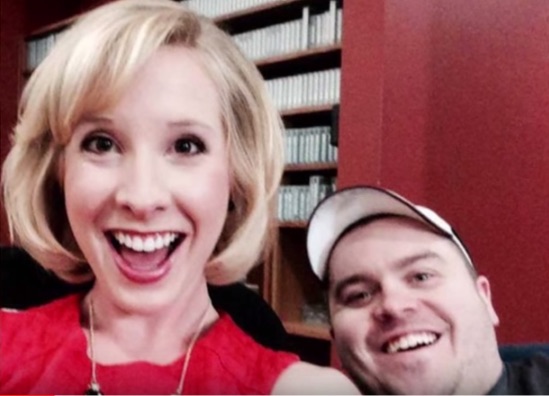Voyeurism. #Hashtag. Murder. Put them all together and add a sprinkling of bitter enraged sociopathic journalist and you have the gut wrenching tragedy of #WDBJ.
On August 26, 2015 America saw its first live television murder complete with multiple camera angles and social media play-by-play of the hunt for the suspect. We sat back captivated by each gruesome emerging detail of the live television murders of WDBJ-TV reporter Alison Parker and her photographer Adam Ward. Hours later the suspect, a former reporter of the same Roanoke, Virginia television station, fatally shot himself when cornered by police.
I am sickened. Astounded. Horrified.
Not just about the crazy ranting of reporter and vengeful Vester Lee Flanagan—but by the social media frenzy he knew would explode when he started planning these murders a year ago. In a 24 page manifesto sent to ABC News just after his murders, the 41-year-old claims he was motivated by racial discrimination. I think he knew he’d finally get the attention and notoriety he’d so desperately wanted.
I worked in television news for six years. During that time I prided myself on getting the story out first, getting ahold of the best video and getting the most heart wrenching interviews. I shot it, wrote it, voiced it, posted it, tweeted it and shared it. Then, I submitted it for Emmy nominations as some sort of blue ribbon of achievement validating my career as a reporter.
When I first watched the go-pro video of Flanagan just before he murdered two bright, innocent journalists—the first thing I noticed was that he stood there and waited for the photographer to pan back to Alison before he fired. He waited patiently, knowing that it was only a matter of time before the photographer panned back to go wide on the shot. Because Flanagan knew the process and he wanted it live.
He waited for the perfect timing for the angle he’d envisioned, straightened the shot on his go-pro and murdered two innocent people. He also knew what would happen next.
Flanagan then fled the scene. He wasn’t worried about being caught or identified because he was already planning on those things happening. His largest concern was reporting the story. His morbid story. He wrote it, posted it, tweeted it and shared it. And just as he knew they would, thousands of journalists gobbled it up. Just as he knew they would, millions of people shared it. Just as he knew we would, we were captivated by his evil.
There has to be a line we don’t cross.
Forever, emblazoned in every search engine, the lives of Alison Parker and Adam Ward will be relentlessly exploited and branded by the actions of that evil sonofabitch. Parker and Ward’s mothers, grandfathers, former teachers, mentors and friends will live with the live video images of their murders running over and over in their minds.
Flanagan pulled the trigger, but we did this.
Our society and the field of journalism as a whole, needs to make a change.
We must stop tolerating the exploitation of life for the simple sake of a retweet or a like. Or ratings. Or Emmys.
This incident has me questioning the news creed I had believed in so strongly.
Gruesome sells. Horrifying sells. Scandalous sells.
But at what cost?
#dontsharethevideo
~
Relephant read:
Changing the Narrative: How We Can Stop Caring about the Killers Among Us.
~
Author: Shea Allen
Editor: Ashleigh Hitchcock
Photo: Youtube video still







Read 0 comments and reply